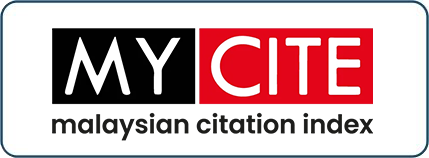تعلم مفردات اللغة العربية عبر برنامج الواقع المعزز: حاجات طلبة السنة الثانية في مركز برماتا إنسان
Learning Arabic Vocabularies through Augmented Reality Platform: The Needs of Asas 2 Students at Kolej Permata Insan
DOI:
https://doi.org/10.33102/jfatwa.vol13no1.203Keywords:
تحليل الحاجات, برنامج الواقع المعز, مفردات اللغة العربية, مركز برماتا إنسانAbstract
This quantitative research aims to analyze the needs of the Kolej Permata Insan students for the use of augmented reality as one of the modern teaching aids in learning Arabic vocabularies. The result revealed that the students showed their needs to the use of augmented reality platform as an enjoyable learning tool to help them understand the Arabic vocabulary and remember it well. They also suggest some important things pertaining to the process of learning Arabic vocabularies through the augmented reality platform such as the provision of spelling and translation of the vocabulary, guidance from the teacher besides the use of current Arabic teaching materials.
يهدف هذا البحث الكمي إلى تحليل حاجات طلبة مركز برماتا إنسان نحو استخدام برنامج الواقع المعزز كأحد الوسائل التعليمية الحديثة في تعلم مفردات اللغة العربية. وتوصّلت النتيجة إلى أنّ الطلبة يظهرون حاجاتهم نحو استخدام برنامج الواقع المعزز كوسيلة تعليمية ممتعة تساعدهم في فهم مفردات اللغة العربية وتذكرها بشكل جيد، كما أنّهم يقترحون بعض الأشياء المهمة من تزويد تهجئة المفردات وترجمتها، وكذلك الإرشاد من المعلم واستخدام المواد التعليمية الحالية أثناء تعلمهم لمفردات اللغة العربية عبر برنامج الواقع المعزز.
Downloads
References
أحمد حامد منصور. 1999. تكنولوجيا التعليم وجودة التعليم والتعلم للقرن الحادي والعشرين. ندوة تكنولوجيا التعليم والمعلومات حلول مشكلات تعليمية وتدريبية ملحة. جامعة الملك سعود، كلية التربية، قسم وسائل وتكنولوجيا التعليم. الرياض. المملكة العربية السعودية.
جامعة الملك عبد العزيز. 2011. التعلم عبر الجوال. وحدة التدريب والتنمية البشرية. المملكة العربية السعودية.
محمد نزوان بن موسلينغ. 2015. تحليل الحاجات اللغوية الشائعة في مواقف التواصل الشفهي باللغة العربية لسائقي التكاسي الماليزيين بمطار كوالا لومبور الدولي. بحث تكميلي مقدم كجزء من المتطلبات لنيل درجة الماجستير في اللغة العربية الاتصالية. جامعة العلوم الإسلامية الماليزية.
Abd. Razak, A. Z, Nik Saleh, N. S. S., Zainun, A., Asmuje, N. F., Md Sallehan, S., & Abdul Fatah, F. 2016. Helping Gifted and Talented Students cope with Perfection in Academics. Innovation in Student Centered Teaching & Learning. Usim Publisher.
Aladdin, A. Hamat, A & Yusof, M. S. 2004. Penggunaan PBBK (Pembelajaran Bahasa Berbantukan Komputer) dalam Pengajaran dan Pembelajaran Bahasa Arab sebagai Bahasa Asing: Satu Tinjauan Awal. Vol. 4 (1). GEMA Online Journal of Language Studies.
Arvanitis, P. 2012. Augmented Reality in Second Language Teaching and Learning. Conference Proceedings. 4th International Conference on Education and New Learning Technologies.
Azuma, R. T. 1997. Survey of Augmented Reality. Teleoperators and Virtual Environment 6, 4 (August 1997).
Baba, A. 1999. Statistik Penyelidikan dalam Pendidikan dan Sains Sosial. Bangi: Penerbit Universiti Kebangsaan Malaysia.
Esa, A., Mohamad, B. & Mukhtar, S. N. 2007. Peranan Multimedia di dalam Pembelajaran Kanak-Kanak. Seminar Kebangsaan JPPG 2007: Teknologi Dalam Pendidikan, 18-20 November.
Fitz Gerald, E., Ferguson, R., Adams, A., Gaved, M., Mor, Y. & Thomas, R. 2013. Augmented Reality and Mobile Learning: The State of Art. International Journal of Mobile and Blended Learning (In Press).
Ghalib, M. F. 2006. Design, Development and Evaluation of a Web Courseware with a Pedagogical Agent. Thesis submitted in fulfilment of the requirement for the Doctor of Philosophy. Universiti Sains Malaysia.
Ghazali, A. R., Ismail, M. R, Abdul Latif, K. A., & Mat Ali, A. 2016. Analisis Keperluan Pembangunan Modul Balaghah Bagi Pelajar Sarjana Muda Bahasa Arab Sebagai Bahasa Kedua. International Conference on Aqidah, Dakwah and Syariah 2016.
Gibbons, P. 2003. Scaffolding Language, Scaffolding Learning Teaching Second Language Learners in the Mainstream Classroom. NALDIC News.
Hutchinson, T., and Waters, A. 1987. English for specific purposes: A learning-centered approach. Cambridge: Cambridge University Press.
Ibrahim, A. R., Nik Saleh, N. S. S., Yusoff, N. M. R., Kamarudin, M. Y., & Zakaria, Z. 2017. Enriching Gifted and Talented Students via Smart Tablet. American Scientific Publishers (Unpublished Article).
Junaidi, J & Jailani M. 2010. Faktor- Faktor Yang Mempengaruhi Penggunaan E-Learning Di Kalangan Pelajar-Pelajar Tahun Empat, Fakulti Pendidikan, Universiti Teknologi Malaysia (Unpublished Article). UTM Institutional Repository.
Kesim, M. & Ozarslan, Y. 2012. Augmented Reality in Education: Current Technologies and the Potential for Education. Procedia- Social and Behavioral Sciences 47 (2012).
Krejcie, R. V & Morgan, D. W. 1970. Determining Size for research activities. 30: 607 – 610. Educational and Psychological Measurement.
Li, S., Chen, Y., Whittinghill, D. M. & Vorvoreanu, M. 2014. A Pilot Study Exploring Augmented Reality to Increase Motivation of Chinese College Students Learning English. 121st ASEE Annual Conference & Exposition.
López, D. P, Contero, M. 2013. Delivering Educational Multimedia Contents Through an Augmented Reality Application: A Case Study on Its Impac on Knowledge Acquisition and Retention. October 2013, volume 12 issue 4. TOJET: The Turkish Online Journal of Educational Technology.
Maskor, Z. M., Baharudin, H., Lubis, M. A., & Yusuf, N. K. Teaching and Learning Arabic Vocabulary: From a Teacher’s Experiences. 7, 482-490. Creative Education.
Mahmoud, A. R., Sahrir, M. S. & Osman, R. A. 2013. Integration of an Interactive Program in Learning Arabic for Non-Native Speakers via Virtual Tutor. Vol. 13 (3). GEMA Online Journal of Language Studies.
Mohd Nizwan Bin Musling. 2015. Tahlil Al-Hajaat Al-Lughawiyyah Al-Shai’ah Fi Mawaqif Al-Tawasul Al-Shafahi Bi Al- Lughati Al-Arabiyyati Li Saiqi Al-Takasi Al- Maliziyyin Bi Mator Kuala Lumbur Al-Dauli. A dissertation presented as part of the requirements for a master degree in Arabic Language Communication. Nilai: Universiti Sains Islam Malaysia.
MyMetro, 2015. “Anak Muda Perlu Cekap”. Retrieved from: http://www.hmetro.com.my/node/90263. (accessed on 31st May 2016)
Nurhazarifah Che Kassim. 2016. Aplikasi Mudah Alih Augmentasi Realiti (AR) Bagi Pendidikan Awal Bahasa Arab Berdasarkan Buku Teks Bahasa Arab Tahun Satu (ARabic). 7th Exposition on Islamic Innovation (i-INOVA) 2016. Nilai: Universiti Sains Islam Malaysia.
Permatainsan. (n. d). “Kolej Permata Insan Usim". Retrieved from http://permatainsan.usim.edu.my. (accessed on 31st May 2016)
Rakchanok Saengpakdeejit. 2014. Strategies for Dealing with Vocabulary Learning Problem. Vol. 14 (1). Silpakorn University Journal of Social Sciences, Humanities and Arts.
Richterich R. & Chancerel L. 1980. Identifying the needs of adults learning foreign language. Oxford: Pergamon Press for the Council of Europe.
Saforrudin, N., Zaman, H. B., Ahmad, A. 2012. Usage Concept of Augmented Reality Technology in Islamic Study. Vol. 2, Issue 1. GJAT.
Saforrudin, N., Zaman, H. B., Ahmad, A. 2014. Kerangka Konsep Pembangunan dan Penilaian Alat Pengarangan AR – EzAR. Persidangan Kebangsaan Kurikulum dan Teknologi Pengajaran 2014.
Samira, A. B. & Fateme, M. F. 2013. A Needs Analysis of English for Specific Purposes Course for Adoption of Communicative Language Teaching: A Case of Iranian First Year Students of Educational Administration. Vol. 2 Issue 6. International Journal of Humanities and Social Science Invention.
Solak, E & Cakir, R. 2015. Exploring The Effect of Materials Designed with Augmented Reality on Language Learners’ Vocabulary Learning. Vol. 13. No.2. The Journal of Educators Online – JEO.
Songhori, M. H. 2008. Introduction to Needs Analysis. Issue 4. English for Specific Purposes World.
Suharso, A. 2012. Model Pembelajaran Interaktif Bangun Ruang 3D Berbasis Augmented Reality. Vol. 11. No. 24. Majalah Ilmiah Solusi Unsika.
Zainuddin, N. & Sahrir, M. S. 2014. Development of Arabic Case System Online Tutorial Using Capture Software. 8(4) Special 2014. Australian Journal of Basic and Applied Sciences.
Zainuddin, N. & Sahrir, M. S. 2015. Theories and Design Principles of Multimedia Courseware for teaching Arabic Vocabulary: An Analytical and Evaluative Study. International Journal of Technical Research and Applications. Issue. 30.
Zainuddin, N., Sahrir, M. S., Idrus, R. M. & Jaffar, M. N. 2016. Scaffolding a Conceptual Support for Personalized Arabic Vocabulary Learning Using Augmented Reality (AR) Enhanced Flashcards. Journal of Personalized Learning, 2(1).
Downloads
Published
Issue
Section
License
The copyright of this article will be vested to author(s) and granted the journal right of first publication with the work simultaneously licensed under the Creative Commons Attribution 4.0 International (CC BY 4.0) license, unless otherwise stated.















